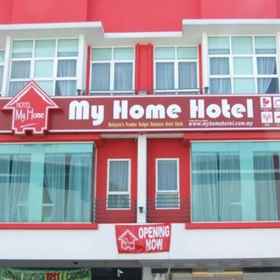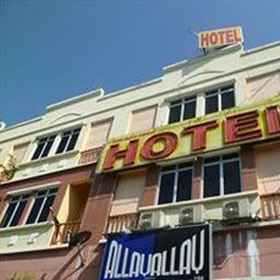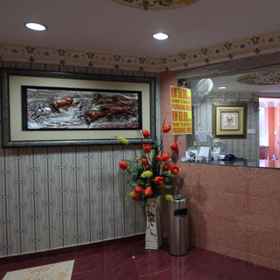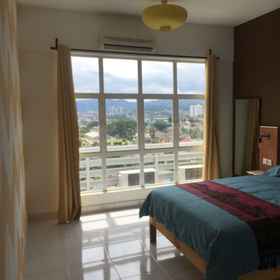
Hotels in Batu Caves
- Hotel/
- Malaysia(12708 Hotels)/
- Kuala Lumpur(4002 Hotels)/
- Batu Caves(28 Hotels)

Why Pay More
When You Can Pay Less?

Best hotels in Batu Caves
Discover what you like
Hotels near popular landmarks
Other hotels in Batu Caves
Exclusive for new users—register today!
Up to RM 125 off Flights
8% off Hotels
8% off Attractions
10% off Car Rental
12% off Airport Transfer
About Batu Caves
Batu Caves is a limestone hill that houses a series of caves and cave temples which are located in Gombak, Selangor, Malaysia. It gets its name from the river flowing through the hill which is named Sungai Batu, a literal translation of Stone River. The cave is one of the most popular Hindu temples that are located outside India. Dedicated to Lord Murugan, the temple and nearby areas have been a major focal point of Thaipusam celebration. A major landmark in Batu Caves is the golden statue of Murugan, a major Hindu deity. This statue is said to be the tallest of its kind, with the height reaching up till 42.7 metres.
Historically, the limestone that made up Batu Caves is said to be around for almost 400 million years. Some of the cave entrances were once used by the indigenous Temuan people as shelters. In 1860, Batu Caves was excavated by Chinese settlers for guano which would be used to fertilize their vegetable patches. In 1890, K.Tamboosamy Pillai, an Indian trader, installed the statue of Murugan as part of his efforts to promote Batu Caves as a place of worship. Thaipusam celebrations began celebrated here from 1892 onwards till this day.
How to Get There
By Car
People driving from Kuala Lumpur may drive via Jalan Kuching/Route 1 for immediate access to Batu Caves. The journey could take up around 20 minutes depending on the traffic.
By Train
The only train providing direct access to Batu Caves is the KTM commuter line. From the centralized KL Sentral station, take a KTM commuter directly to Batu Caves station.
Tourist Attractions
Temple Cave
Temple Cave or also known as Cathedral Cave is the biggest cave of Batu Hills. It is guarded by the massive Murugan statue standing outside the temple. It has very high ceilings and features ornate Hindu shrines and decorations. These shrines are the very reason why the cave is named such. There are a couple caverns inside the cave which houses Murugan’s abodes carvings and temple of Valli Devanai, the wife of Murugan. It is located 100 metres up high, where visitors need to finish climbing a steep flight of 272 steps – which is a feat in itself. Entrance is free for all visitors, nonetheless collection boxes are placed outside for generous visitors who wish to give donations.
Dark Cave
Another interesting place for sightseeing when visitors are in Batu Caves is the Dark Cave, one of the main caves but smaller than Temple Cave in overall. It is accessible halfway through the 272-step stairs, in which visitors can drop by in their journey to visit the Temple Cave. This cave has no religious purposes, instead it is a cave meant for adventurous and also educational endeavours. A paid 45-minute Educational Tour is provided along the 850 metres of 2 kilometre long cave with helmets and headlights provided in which the guide will lead the way through interesting rock formations and bat populations. An Adventure Tour with higher rates is provided for the souls who admired challenges, this will take up three to four hours of journey through the rock faces and pot holes.
Kuala Lumpur City Centre
Due to its close proximity to the city centre, it feels incomplete to not include Kuala Lumpur City Centre in the list. A half-hour journey from the Batu Caves, Kuala Lumpur City Centre is a shopping haven which houses some of the spectacular shopping malls in Kuala Lumpur. The development is also beautifully done to give the visitors an urban feeling and mesmerizing atmosphere of the heart of Kuala Lumpur.
Hotels
Lavana Hotel @ Batu Caves
A two-star hotel situated in Jalan Sri Selayang. At a budget rate and close proximities to Batu Caves, this hotel offers comfort and satisfactory stay.
Batu Caves Star Hotel
Batu Caves Star Hotel is one of the established hotels here. A decent hotel with abundant facilities at affordable prices.
Facts about hotel in Batu Caves
Total Accommodation | 227 Properties |
Popular Hotel | KIP Hotel, The Concept Hotel Batu Caves |
Popular Landmark | Batu Caves , Batu Caves MRT |
Frequently asked questions

Guest reviews in hotel near Batu Caves
Why book Accommodation in Traveloka?



We’ve got more than just hotels
What interests you?







































 Facebook
Facebook Instagram
Instagram TikTok
TikTok Youtube
Youtube Twitter
Twitter Telegram
Telegram